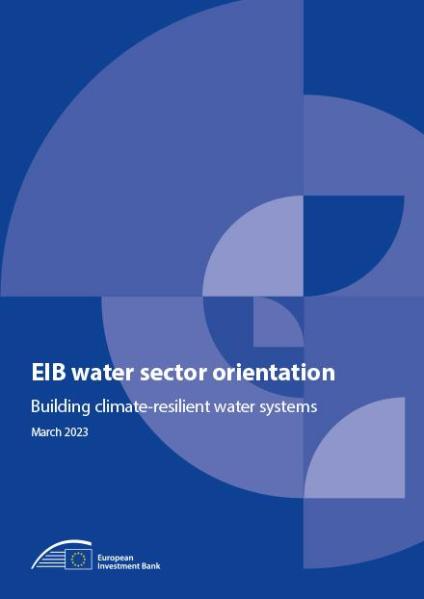
- New EIB Water Sector Orientation analyses water infrastructure needs until 2030 and presents steps to build climate-resilient water systems around the world
- In view of the large investment gaps in the water sector, the paper clarifies which type of financing will have the highest impact
Today, the European Investment Bank (EIB) published its new Water Sector Orientation. The document presents the Bank’s investment priorities in the sector, where limited financing is available. These priorities include conventional infrastructure as well as innovative approaches, such as circular economy, nature-based solutions, and digitalisation. The policy highlights the types of investments that will maximise the Bank’s impact to achieve its climate and environmental objectives.
Water infrastructure can be expensive but it’s at the heart of human development,” said Ambroise Fayolle, the EIB Vice President in charge of climate action and environment. “We ought to consider money spent on water as good investment, rather than as a sunk cost. Our new Water Sector Orientation shows just how costly it would be for us not to invest in water. And it highlights the types of investments that the EIB will support to make progress on climate-resilient water systems and to maximise the impact of scarce resources.”
The policy paper looks at four sub-sectors: 1) domestic and industrial water supply; 2) wastewater collection and treatment; 3) flood protection; and, for the first time, 4) agricultural water management. In doing so, it demonstrates the strong role climate-resilient water systems can play to achieve sustainable development for all.
The Bank’s previous water sector orientation was adopted in 2017. It has been reviewed in the light of the European Green Deal, agreed in December 2019, and the subsequent publication of the EU Taxonomy, which defines a classification system for sustainability in the world of finance. Today’s Water Sector Orientation builds on a number of EIB documents that support the Green Deal: the Climate Bank Roadmap, the Climate Adaptation Plan and the Environment Framework. It also considers changes to the Bank’s operating environment.
Background
Within the European Union, safe drinking water and sanitation are available virtually everywhere. However, countries must operate, maintain and upgrade existing infrastructure. Investment is needed especially with a view to new European legislation that increasingly pushes for better treatment of micro-pollutants in wastewater. In addition, global warming is causing more frequent floods and droughts to which countries need to adapt.
Outside the EU, billions of people still don’t have access to clean water and about half of the world’s population doesn’t use safely managed sanitation. The United Nations predict that water-related threats will become more pressing. Experts also agree that an unpredictable supply of water puts societal progress at risk and in some regions even threatens peace.
As one of the world’s largest public lenders to the water sector the EIB aims to strengthen water security and climate change adaptation around the globe. On average the Bank finances €3bn in water infrastructure every year. Around 30% of EIB water projects are carried out outside the EU, including in some of the world’s poorest and drought-stricken countries in Africa, Asia, Latin America and the Middle East. Projects financed alongside regional partners connect cities and villages to clean water and sanitation, enable flood-resistant infrastructure and encourage communities to recycle their water.